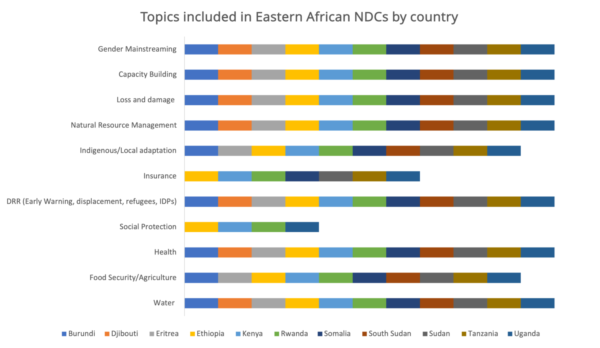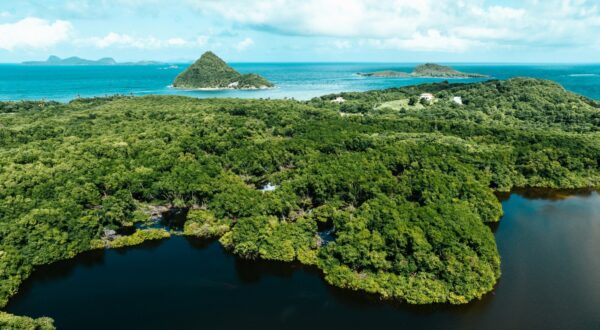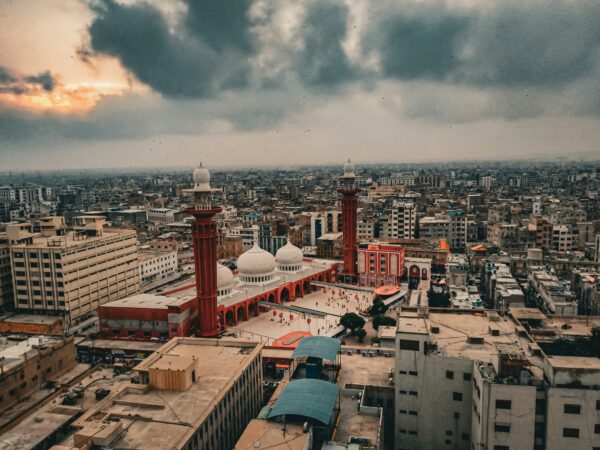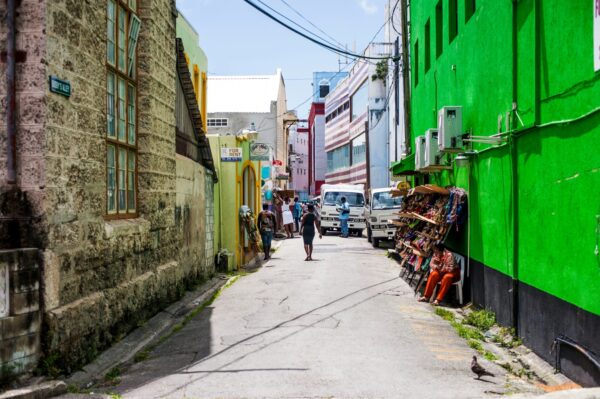From droughts to floods: how Eastern African countries are responding to the rising El Niño and Indian Ocean Dipole
Winnie Khaemba, Masilin Gudoshava, Shruti Nath
The Horn of Africa looks set to go from one disaster to another as floods intensified by a rising El Niño and a positive Indian Ocean Dipole are predicted to follow a prolonged drought. We take a look at climate policies in the region and what countries are doing to prepare for compound extreme events.
Share

After its worst drought in 40 years, the Horn of Africa faces a new threat: severe flooding. Forecasts of a heavy rainy season, likely intensified by a rising El Niño and a positive Indian Ocean Dipole (IOD) are set to pile disaster on disaster.
After five consecutive failed rainy seasons, the rains that came earlier this year should have brought welcome relief. Instead, flash flooding wiped out crops, livestock and homes in some places in Ethiopia, Kenya and Somalia already beset by a prolonged drought and food insecurity crisis.
Now, ICPAC are giving an 80% chance Ethiopia, eastern Kenya, and southern Somalia will experience a wetter than normal rainy season (October to December).
This is a worrying trend in which opposite extremes occur in quick succession without time for recovery. Dry lands are also less able to absorb water; topsoil gets degraded following a long dry spell, increasing the risk of flash flooding. Such compound extremes chip away at the ability of countries and communities to adapt, making them less resilient and therefore more vulnerable to future shocks.
In addition to the loss of lives and livelihoods, flooding can lead to displacement, disease and other impacts. This affects communities’ ability to spring back, especially after a devastating drought that wiped out over 10 million livestock and left over 55 million people in exacerbated food crisis.
In response to the drought, the Kenyan Government increased the number of households considered vulnerable under its social protection programme. These numbers will keep going up as impacts worsen. Managing such compound climate impacts requires long-term climate planning. This is already happening as part of countries’ long-term economic blueprints, in climate policies and under international climate policy processes.
On top of human-induced warming, natural climate cycles like El Niño (a warmer phase driven by high sea surface temperatures in the Pacific) and its cousin a positive Indian Ocean Dipole (warmer waters off the East coast of Africa) will likely lead to enhanced rainfall over the region. As a result of climate change, the cycle of droughts and flooding looks likely continue. The IPCC AR6 Working Group I report projects that the region is set to experience extremes such as droughts and floods with both increased intensity and frequency.
Climate policies and plans in East Africa
In regions on the frontlines of the climate crisis like Eastern Africa, NDCs place a much stronger emphasis on adaptation and resilience building, as populations have been dealing with the impacts of climate change for decades.
In every Eastern African NDC, disaster risk reduction, health, water, and loss and damage are included as an adaptation issue. In these countries, climate change is already a daily reality with far reaching consequences for society and development.

So, while East African countries have detailed climate plans in place, there remains a key challenge in turning these national pledges into action: money. Just 15% of the funds needed to implement NDCs has been committed by countries, the rest – around $527 billion – is conditional on international climate finance.
There are also National Adaptation Plans (NAPs) and National Adaptation Plans of Action (NAPAs), which elaborate adaptation actions at the national (and sometimes sub-national) level. In East Africa, some of these plans address the increasing risks of flooding, including in some instances flood-proofed infrastructure and health sector systems that consider and address the impacts of floods.
In terms of National Frameworks for Climate Services (NFCS) – structures that countries put in place so they can better design, use and offer climate information and services – Ethiopia has developed one and Kenya is in the process of finalising theirs. NFCSs are useful during climate-related disasters, as they offer a full-cycle approach in early warning and response, targeting user-driven climate information and engaging multiple stakeholders. These frameworks will be critical in responding to any floods and should be actualised as soon as possible in the two countries.
Putting policies into practice
An analysis of food and water security policies in Ethiopia, Kenya and Somalia showed that enforcement is a key gap. Most of the countries have water regulations which, if enforced, could alleviate the impacts of floods. For instance, better enforcement could save lives and property in settlements along riparian lands that are prone to flooding. There are also existing regulations on wetland protection, watershed management, and dam structures, the collapse of which can be especially devastating.
At the recent Africa Climate Summit, African heads of state ‘expressed concern’ about the disproportionate climate risks facing the region, including floods. They committed to strengthening early warning and climate information services in line with the Early Warning for All initiative launched at the UN climate talks in Sharm-el-Sheikh last year. They also committed to accelerating the African Union Climate Change and Resilient Development Strategy and Action Plan (2022-2032). If seen through, this could help the region better address floods, droughts and other climate risks.
Eastern African countries need to step up their preparedness to respond to the flood situation. Measures will range from short-term to long-term actions. How countries respond to this impending climate disaster could set a positive precedent for future events as the risk of climate extremes grows. It will also be a test of how well (or not) the international climate finance architecture can respond to such disasters in real time, as well as how arising loss and damage issues can be addressed, articulated and documented.
At the moment, climate finance to Africa. stands at only US $30 billion annually vs the estimated USD 277 billion needed each year to implement NDCs. Countries in the East Africa region have the largest climate investment gap as a function of GDP. Overall, adaptation makes up just 39% of climate finance, lagging behind mitigation at 49%.
It’s clear from Eastern African climate policies and plans that adaptation is a top concern, yet their priorities are still not fully reflected in climate talks or in the finance delivered. Governments must urgently address this to ensure the whole process is perceived as fair, but most importantly to minimise the devastating human cost of the escalating climate crisis.
Header image: People wading through floods in Somalia in 2019. UNSOM/Flickr












